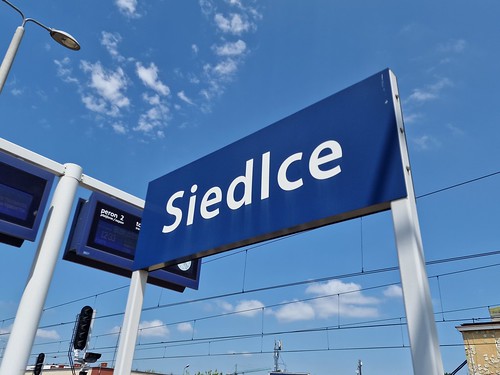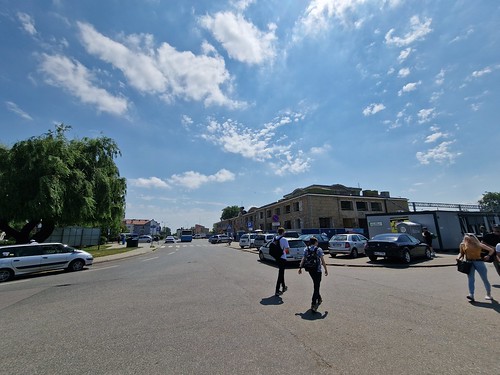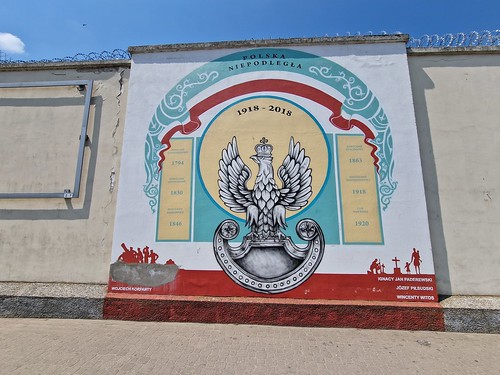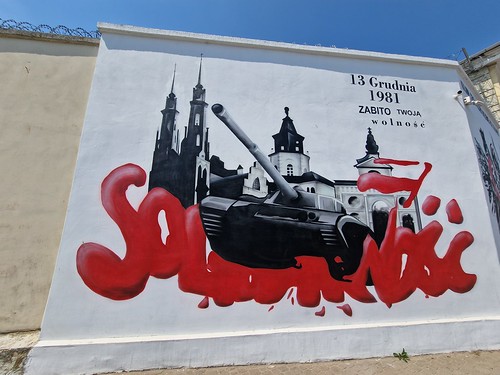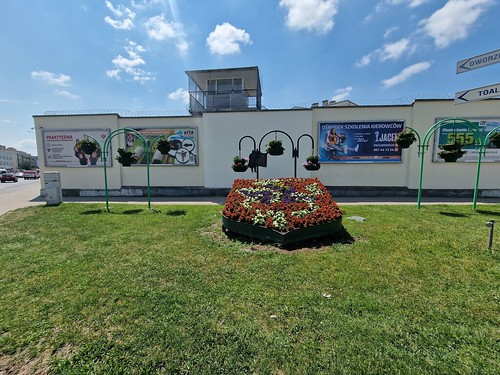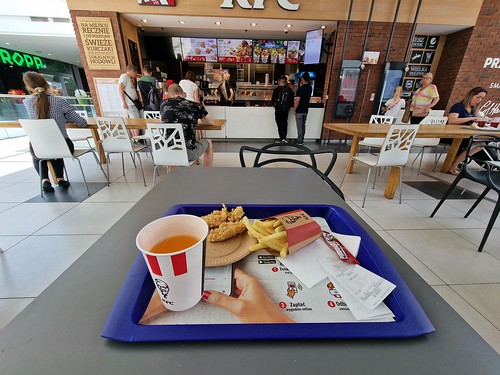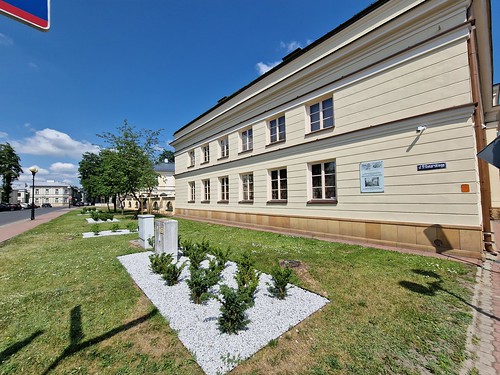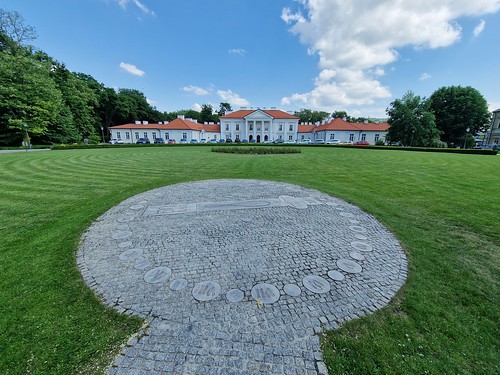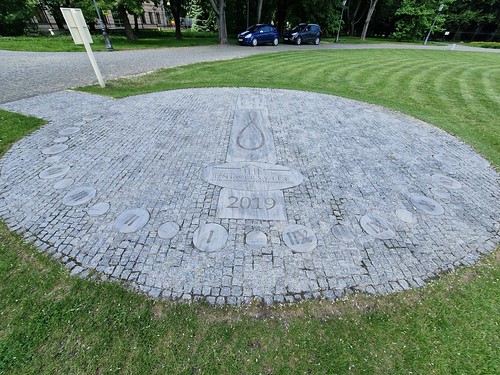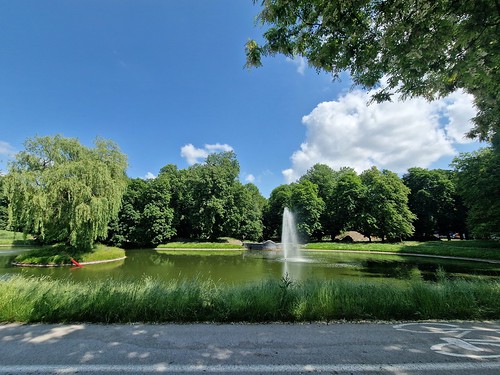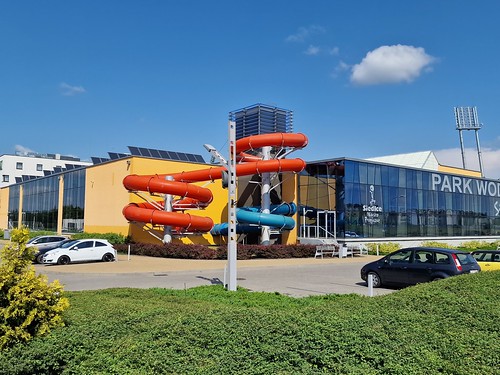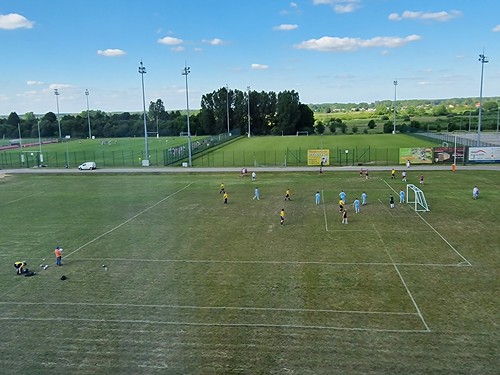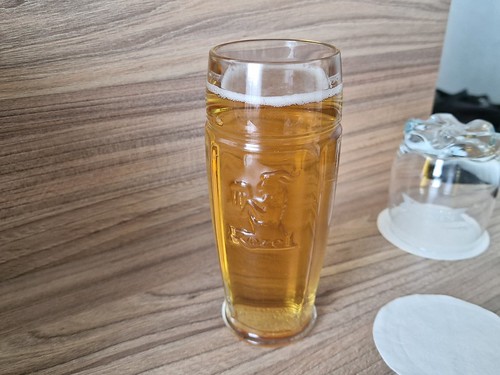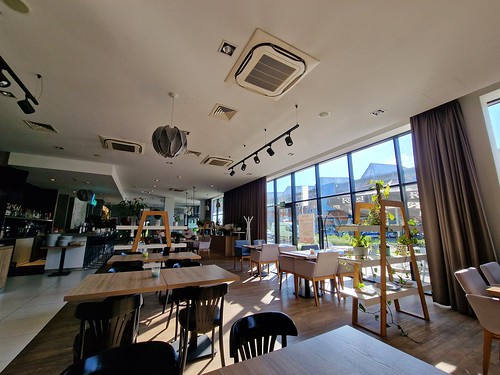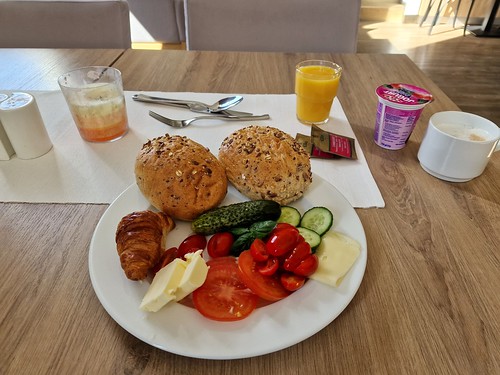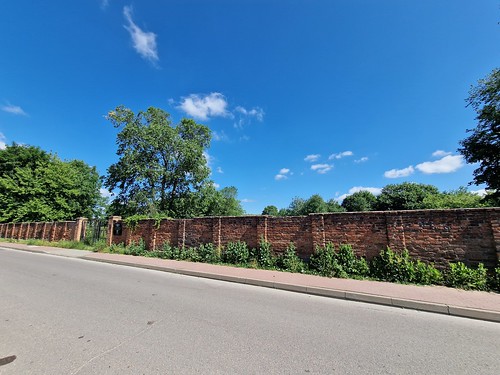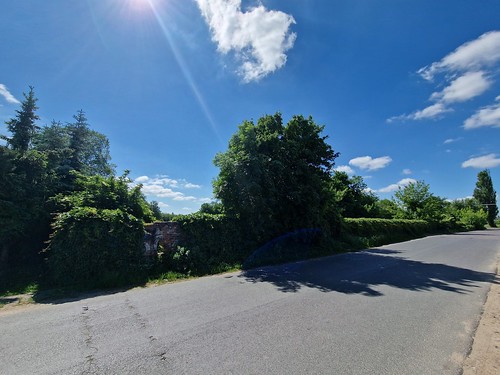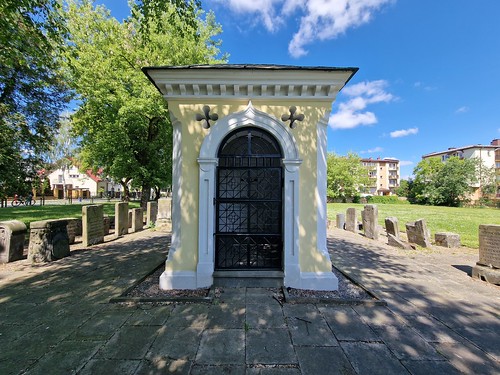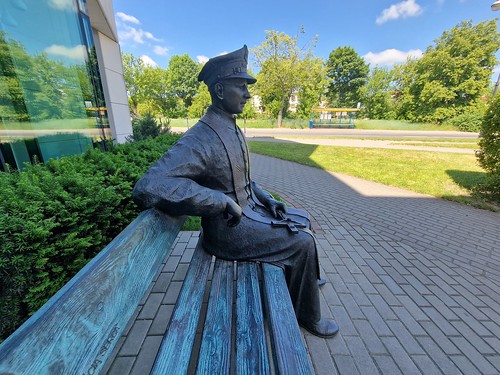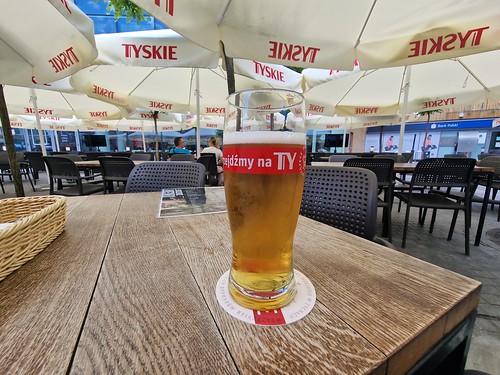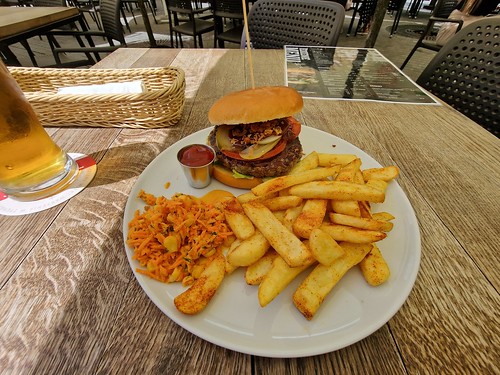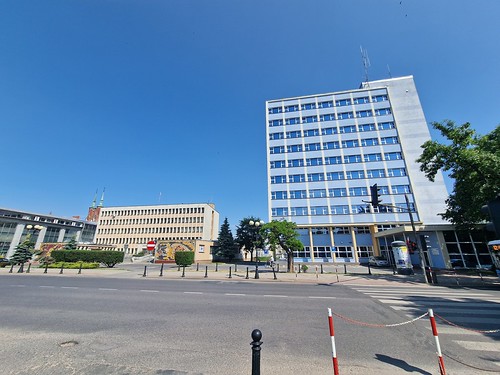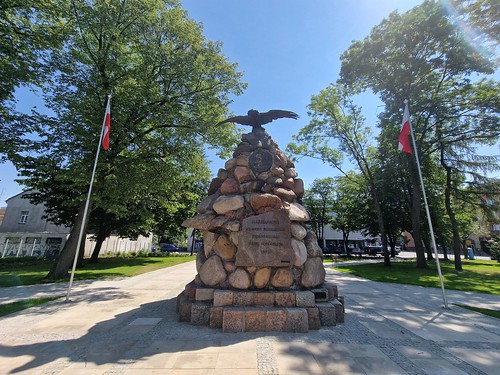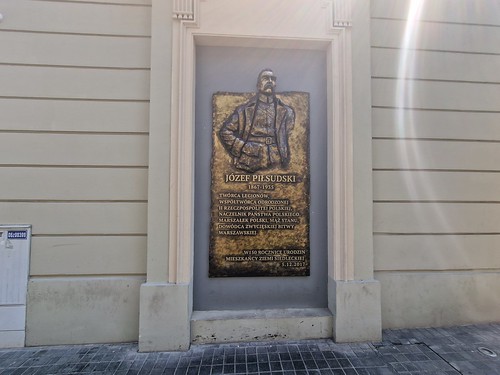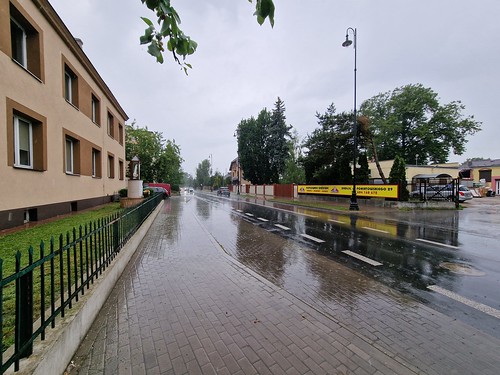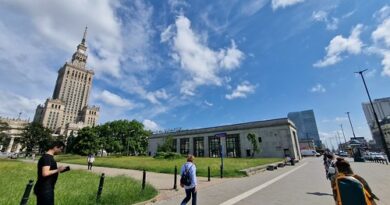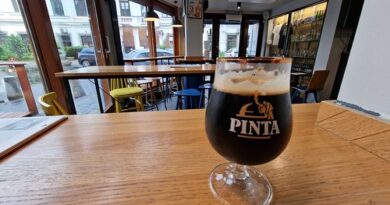Friday to Monday : The Polish City of Siedlce
I had arrived in the Polish city of Siedlce on time, it’s a relatively short train service from Warsaw. I won’t post about each day individually, I’ll wrap my three day trip up into one blog post to try and theme things together a little better. Less for my two followers to wade through that way as well.
My first sight of Siedlce after leaving the railway station and I never quite know what to expect from Polish cities. I’ve been to thirty or so different large towns or cities in Poland, some feel prosperous and some really don’t seem to have developed much economically since the Second World War. It’s hard to under-estimate how much damage was done to the country during the Second World War, with over half of Siedlce’s buildings being badly damaged or destroyed. The town hall was wrecked and the centre was devastated, with the communist influenced led city not really receiving the investment it should have done in the post-war period either.
My first impressions were a little negative as the railway station was basic and the photo shows the damaged building in a prominent location. However, this wasn’t the general situation in Siedlce, which actually seemed quite prosperous and there were only a handful of buildings that I saw which were derelict. There seems to be an element of wealth to the city now, perhaps its accessible location to Warsaw has helped. It felt very much a city at ease with itself, with a modern edge evident throughout.
Polska niepodległa means “independent Poland” and refers to when the country finally received its independence in 1918, following 123 years of being partitioned by Russia, Prussia and Austria.
13 December 1981 is when martial law was introduced in Poland, after the years of communist greed and incompetence. They arrested over 10,000 activists from Solidarity, or Solidarność, for the period that martial law continued for, which was until July 1983.
“Zlo dobrem zwyciezaj” means overcome evil with good.
There were numerous decorative touches around the city, here are some carefully tended flowers.
Oops.
I didn’t get to go inside as there always seemed to be services, funerals or other functions going on, but this is the Catholic Cathedral of the Immaculate Conception.
The sign notes that this was the site of the secondary school built in 1919, but the buildings were destroyed during the Second World War. I mention this as the city has placed numerous history boards on buildings, although they’re all only in Polish. That’s not a complaint, just in most Polish cities they also translate into English, so it’s an indication they’re not expecting a huge number of English visitors here.
The former Ogiński Palace, constructed as a grand residential property in the eighteenth century which is now used by the Siedlce University of Natural Sciences and Humanities. It’s not possible to go inside, although since the building was nearly destroyed by fire in 1944, it’s most recreated.
Some kind of sundial in the palace gardens.
The city has a lovely park, Aleksandria (or Alexandria), although it’s closed at the moment whilst they do some faffing about with it. It had a little zoo in it for a while, although most of the buildings in the park were demolished during the Second World War. As an aside, a lot of this city’s narrative still can only be told by the prism of the 1940s, its legacy runs deep.
The water park, which I didn’t go to, but is next to the Ibis Styles hotel where I was staying.
And there’s the hotel, glistening in the sun which made the city too hot.
It’s very much not in the Ibis Styles brand standard, but that’s it was constructed for use as an independent hotel and was brought into Accor later on. The air conditioning makes the rooms freezing, which I was very pleased about as this is my desired state of temperature affairs. They didn’t bother to clean the rooms at any time during the stay, which is something that every other Accor hotel I’ve visited in Poland is managing to do at the moment and have done for some time. There was also an absence of any paperwork relating to the restaurant, hotel facilities or indeed anything else, either in paper or digital form.
A pleasant view from the room.
Later on during the weekend I watched some football matches that were being played. I say watched, I more glanced out of the window every few minutes.
There was no welcome drink offered, although I was given a voucher when I queried it. They made clear though that I couldn’t have any nice beer of which they did sell in bottles, just a small glass of generic and cheap Czech beer. They didn’t use the words generic or cheap, but it seemed a sloppy way to welcome a guest (not that I’m important to need that, but the point of the scheme is to offer a nice welcome) and Orbis who run the Accor hotels in Poland told me before that they had done away with this penny pinching. The hotel did seem badly managed in many ways and it’s the first time I’ve been asked to pay at the end of my stay in an Accor hotel in Poland, payment is always taken before the stay, or occasionally on check-in. They then messed this up, which summed up the stay for me, but I have to add that it was cheap and it would be unfair not to mention that.
The restaurant might be separately managed, it was differently branded to the rest of the hotel, which might explain their lack of wanting to give away any beer that might taste nice. Actually, not wishing to drone on about this, it annoyed me as I was going to eat in their restaurant with my free drink, but I decided against it.
The breakfasts in the hotel were fine, although some of the ingredients changed each day and there were some odd items available, which I assume were left over from the restaurant the previous day.
Back to the city and away from my complaints about what the welcome drink was in the hotel, as if that matters. This is the city’s Jewish cemetery which was established in 1825 and there are apparently 1,000 graves here, the oldest of which remains is from 1855. The last burial took place in 1888, with two exceptions which both relate to mass graves. The first is the Siedlce Pogrom, where 26 Jews were killed by the Russians during an uprising in September 1906. The second is the mass grave of 3,000 Jews from the Second World War.
The cemetery can’t be visited by members of the public, there’s a long brick wall which restricts entrance.
There has been some tidying up of the site and they’ve added these gates to the entrance.
The wall goes on for tens of metres around the site.
The rear of the cemetery.
I took a photo through the gates of the inside of the cemetery, but no stones are visible, although there are a fair few inside.
As the Jewish cemetery was next door to the city’s main cemetery, I had a little look around there instead.
It’s better kept than the Jewish one, although that’s something that is a legacy of the post-war period.
All organised and neatly laid out.
I’m not entirely sure what is happening with this site nearby as there were no information boards or the like, but the site was used as a Catholic cemetery from the end of the eighteenth century until the nineteenth century when it closed. In the 1980s, the site was cleared, but numerous gravestones were kept.
Some of the gravestones which had been kept and positioned neatly around the little chapel.
A statue commemorating the life of Lech Kaczyński, the President of Poland from 2005 until he died in a air crash in 2010. I’m not sure if there’s any connection between him and the city, or whether it’s just something that the locals wanted to build in honour of his life.
The Kolumna Toskańska, erected in 1783 to mark the visit of King Stanisław August Poniatowski. I’m quite surprised it’s still there, it feels a bit in the way to be honest. Obviously it didn’t offend the Germans during the Second World War, since it’s one of the few things they didn’t knock down.
As it was too hot again, I had a sit down next to Ignacy Skorupka (1893-1920) who was a Polish Priest who died during the Battle of Warsaw. This conflict isn’t referred to much, it’s a bit overshadowed by the Second World War, but it’s when in 1920 the Polish troops beat the Soviets who were trying to invade. The Soviets, led by Lenin, wanted to seize and suppress the Poles so that they could spread out across to western Europe countries. The Poles weren’t having any of it, the Soviets were smashed and withdrew. The defeat shocked the Soviets who though they had the military advantage and Skorupka’s death was used as part of the theory that God wanted the Poles to win though divine intervention.
He was fortunate, his bench is in a nice cool area.
Brofaktura, which is meant to be one of the few brewhouses in the city, but I couldn’t get a table as they were closed for private functions. I took a couple of photos anyway.
I went to a bar, Piwiarnia Miejska Siedlce, over the road instead, serving Tyskie.
The burger meat tasted a little odd, but the rest of the meal was fine and I wasn’t ill, so that’s a result. Decent chips it has to be said and this burger and drink came to around £5.
The local Government offices, the photo of which I’ve included here as I like the architecture.
As an aside, I was impressed at how well organised the city was generally for pedestrians (the lighter paving) and cyclists (the red stone).
The city over time.
One of the few buildings in the city which was a bit derelict, although it looks like they’re getting ready to repair it.
This building on the other hand is about to be demolished.
I try and visit the site of the former synagogue, as that tends to be all that’s left, in Polish cities and this is all that remains in Siedlce. The Germans raided the building on the night of 24 December 1939, setting fire to it and destroying it. What was worse is that some Jewish people who had been made homeless were in the building, so the Germans killed them.

Here’s what the synagogue looked like. I had a look around the former Jewish ghetto, but there’s not really anything standing that I could take a photograph of. There’s more information about the ghetto at http://www.holocaustresearchproject.org/ghettos/siedlce.html for anyone interested.
And this is where the synagogue used to stand, although they have put some information boards up in a number of languages to mark what was here. That means of the bustling synagogue, Jewish quarter and cemetery, nothing really remains other than for a number of graves in a mostly inaccessible cemetery.
When I was looking for things to do in Siedlce, the local tourist information web-site said it was essential to look at the church built in the middle of a roundabout. Well, here it is.
Pope John Paul II visited the city in June 1999.
I spotted an ice cream shop and it was still too bloody hot so I thought I’d better pop in.
And I got a delicious affogato. Friendly staff in this ice cream shop, definitely a place to pop in when it’s too hot, which was the entirety of my time in the city (with one exception I mention in a moment).
A monument to Józef Piłsudski, one of the country’s national heroes.
There are a lot of references to him, as indeed there are on this blog generally, since he is revered across Poland.
The city hall, with a grand open public space in front of it.
And that’s the abbreviated story of my time in the city, when it was too hot, with the exception of the moment of when I needed to walk to the railway station to leave Siedlce. There were then Biblical rains, when I had to shelter at a bus stop and then avoid being splashed in the flooded roads (although Polish drivers are very careful, but I was taking no risks). Mind you, it made the temperature just right for me, so I couldn’t really complain. I enjoyed my visit to the city and I was very productive with my laptop when here, so that was useful.
Back at Siedlce railway station, where I’ll pick this ever random story up in the next blog post.

